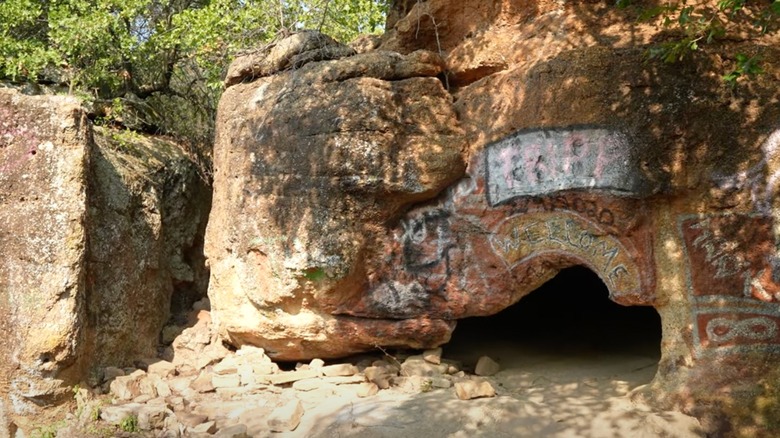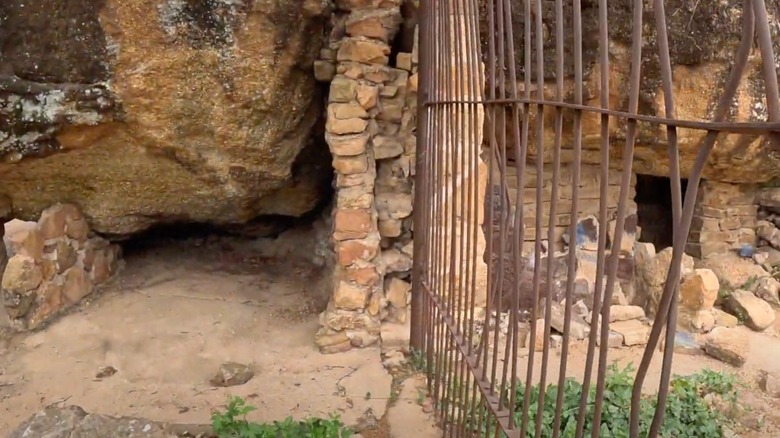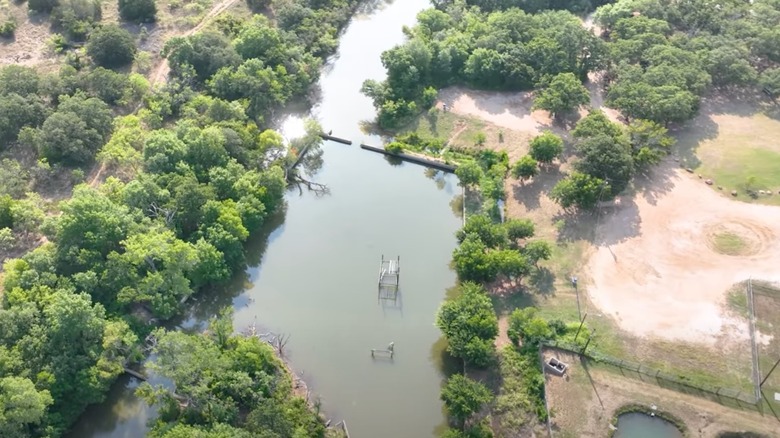In the center of Texas, less than 2 hours from the often overlooked, charming Western hub of Fort Worth, lies a small town with a long history and an unusual attraction. History buffs may know Cisco as the site of an infamous Santa Claus robbery in 1927 and the place where hospitality magnate Conrad Hilton purchased his first hotel, but this town of nearly 4,000 residents was once known for a different reason: It was home to an exotic zoo and the world’s largest concrete swimming pool. Both attractions have been abandoned for decades, leaving a spooky and atmospheric recreational area to explore, courtesy of a newly maintained trail that takes you past creepy, empty animal cages, a graffitied bear den, and a murky, pond-like pool that still houses remnants of a diving board and swing set. Don’t worry about running into any bears, though; the Cisco bear met a mysterious, tragic fate in the 1930s as part of an unsolved crime that possibly contributed to its closure.
Cisco was part of Texas’ oil boom in the ’20s, and a dam was built to support the sudden influx of folks looking to get rich in the oil fields. The dam created Lake Cisco, and the zoo was initially located within the hollow concrete structure before being moved to the outdoor area next to it. The massive pool that spans the length of two football fields was built below the dam, which provided the water. Despite efforts to clean the area up, it still has the abandoned, unsettling vibe that makes it a perfect place to visit for anyone looking to explore an off-the-beaten-path site that captures some darker elements of Texas’ history.
The surprising history of the Cisco Zoo
The Cisco Zoo began in the way that many ideas do: Someone looked at something and saw its potential. In this case, it was the inside of the dam itself, which locals decided to turn into a zoo. Someone contributed a deer, while someone else offered their bear. Rumors swirled that there was a cougar that escaped, although that has never been confirmed. Within a year, the animals were moved to an outdoor location on a hill near the pool, which is where you’ll find their cages and dens today. People flocked to Cisco to swim, skate, and see the animals, as there was no attraction like it in the area, which drew in folks from out of town, especially on the weekends.
Things took an unexpectedly dark turn, though: The deer died, and the bear was poisoned in an unsolved crime, which some attribute to the zoo’s closure in the 1930s. However, a newspaper clipping from the ’30s notes that the deer had died four years prior and that while the bear at that point had been killed, the main cause of concern for the zoo was a lack of funding (via BigCountryHomepage.com). This likely was what caused the zoo to close, since the town was already nearly bankrupt after building the dam. The cycle of transformation of function continued; without any animals to worry about, the abandoned zoo became a favorite hangout spot for locals. As @descodiver commented on an Instagram video about the Cisco Zoo, “What happens at the zoo stays at the zoo,” so in some ways, this is a unique spot in which Texas’ culture and history come to life.




